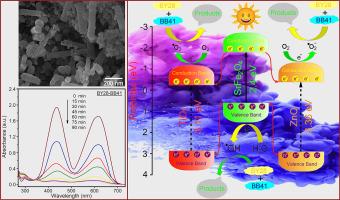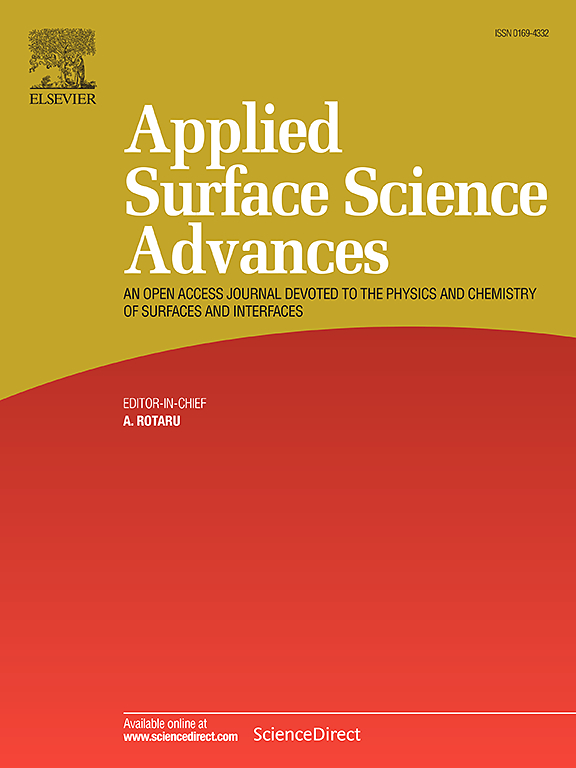Rationally designed ternary TiO2/ZnO/SrFe2O4 heterojunction photocatalyst towards efficient visible-light-induced degradation of binary mixture of basic yellow 28 and basic blue 41 dyes
IF 8.7
Q1 CHEMISTRY, PHYSICAL
引用次数: 0
Abstract
The design and fabrication of hybrid nanostructures featuring enhanced photocatalytic properties have long been of interest to scientists in attempts to eliminate environmental pollution, particularly those emanating from degraded dyes of industrial wastewater. However, research has often strived to remove dyes in single solutions, while there are a few reports to remove them in binary mixture. This research assesses a ternary TiO2/ZnO/SrFe2O4 nanocomposite for its visible-light-driven photocatalytic activity in degrading basic blue 41 (BB41) and basic yellow 28 (BY28) dyes in the single and binary systems. ZnO and SrFe2O4 nanoparticles (NPs) synthesized via the sol-gel method were loaded onto the surface of TiO2 nanorods to form a heterojunction composite. The degradation efficiency was optimized by adjusting initial dye concentration, catalyst dosage, initial pH, and duration of irradiation as key process parameters. Optimally (20 mg/L initial dye concentration; 0.5 mg/L catalyst dosage; and pH: 6.5), the degradation rate of BY28 and BB41 dyes was 0.0423 and 0.0405 min−1 in the single solutions and 0.0388 and 0.0348 min−1 in their respective binary solutions, respectively.

合理设计了TiO2/ZnO/SrFe2O4三元异质结光催化剂,对碱性黄28和碱性蓝41染料二元混合物进行可见光诱导降解
设计和制造具有增强光催化性能的混合纳米结构一直是科学家们试图消除环境污染的兴趣,特别是那些来自工业废水中降解染料的污染。然而,研究往往致力于在单一溶液中去除染料,而在二元混合物中去除染料的报道很少。本研究评估了TiO2/ZnO/SrFe2O4三元复合纳米材料在单一和二元体系中降解碱性蓝41 (BB41)和碱性黄28 (BY28)染料的可见光驱动光催化活性。将溶胶-凝胶法制备的ZnO和SrFe2O4纳米粒子(NPs)加载到TiO2纳米棒表面,形成异质结复合材料。通过调整初始染料浓度、催化剂投加量、初始pH和辐照时间等关键工艺参数,优化了降解效率。在初始染料浓度为20 mg/L,催化剂用量为0.5 mg/L, pH为6.5的条件下,BY28和BB41染料的最佳降解率分别为0.0423和0.0405 min−1,分别为0.0388和0.0348 min−1。
本文章由计算机程序翻译,如有差异,请以英文原文为准。
求助全文
约1分钟内获得全文
求助全文

 求助内容:
求助内容: 应助结果提醒方式:
应助结果提醒方式:


